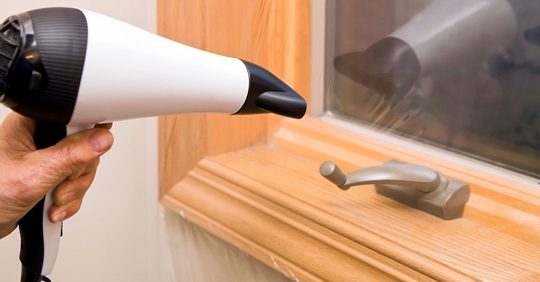Even your southern home needs to be prepped for the colder season. By servicing your HVAC system, maximizing your interior heating efficiency, and storing away your warm-weather necessities, you’ll keep your home safer and more comfortable throughout the season. Learn how to winterize your home for the coming cold.
How to winterize your home
Early fall is the best time of year to get started with most of your home winterization prep. The first priority should be winterizing your HVAC system. Getting started early in the season will give you enough time to schedule service and ensure that your system is reliable before any cold weather hits.
Next, prep your home’s interior, especially if you need to schedule additional services such as duct cleaning or weatherproofing installation.
Lastly, your central AC and exterior winterization prep can likely wait until later in the fall season. It’s a good idea to take care of everything before the holiday season.
How to winterize your HVAC system
- Schedule a maintenance tune-up. A professional tune-up involves cleaning, testing, and inspecting your unit for repair or replacement needs. This is the best way to make sure your heating system will operate safely and efficiently once the temperature outside drops and will also help you avoid unexpected breakdowns.
- Change the filter. It’s best to change your air filters twice a year, once in the spring and once in the fall when indoor air pollutants are worse. This will keep your indoor air quality healthy and keep your HVAC system running more smoothly.
- Test the thermostat. A broken thermostat can cause your heating bills to jump or even cause your heating system to short cycle. Test all functions of your thermostat to make sure it’s ready for the season. Or, consider upgrading to a smart thermostat to maximize your home’s heating efficiency.
- Inspect your ducts. Dirty air ducts can affect the efficiency of your HVAC system, but they can also be dangerous if mold or bacteria begins to grow. If it’s been a while since your last air duct cleaning, be sure to schedule a service.
Related Content: Why Simple HVAC Maintenance Is Beneficial for Your Home
How to winterize your central air conditioning
- Shut it off for the winter. The first step in preparing your central AC for winter is shutting it down. Locate the switch on your main circuit breaker and toggle it to “off.”
- Clean the exterior. Use a damp cloth or hose to gently wash off the dirt and grime from the exterior of your unit. Remove any other debris that has been collected around your unit.
- Cover it (optional). Although it’s not necessary in southern climates, you can choose to cover your unit using an enclosure or top cover. However, if you choose to do so, make sure you regularly check for mildew growth underneath the cover throughout the season.
How to winterize your home’s interior
- Install weatherproofing. Air leaks in your home can account for as much as 40% of the energy used to heat and cool your home. Keep energy costs low and the warm air inside this winter by installing weatherproofing around your doors and windows.
- Change your ceiling fan direction. The direction of your ceiling fan can help improve your home’s airflow and in turn maximize overall heating efficiency. When you switch your ceiling fan direction to clockwise in the winter, this creates an updraft that pulls the cold air up and pushes the trapped warm air back down.
- Check your smoke and carbon monoxide detectors. Home fires occur more often in the winter season than any other, so be sure to test and check the batteries in your smoke and carbon monoxide detectors.
- Flush your water heater. At least once a year you should have your water heater flushed by a professional. Over time, sediment can build up and can damage your tank or plumbing system. If you notice any additional issues with your water heater such as low pressure or a lack of hot water, schedule repair services.
Related Content: Steps to Protect Your Home in a Freeze
How to winterize your home’s exterior
- Shut off outdoor faucets. Water will freeze at temperatures of 32 degrees Fahrenheit and below. While these low temperatures aren’t as common in the south, the cold can still damage your exterior water system. To prevent this, remove and store away any exterior hoses, then drain and shut off your faucets.
- Cover or store outdoor furniture. Dirt and debris can quickly build up on your outdoor furniture that goes unused in the winter season. Cover or store your furniture in a cool, dry place to prevent damage.
- Schedule gutter cleaning. Twice a year you should have your gutters cleaned. This prevents any dirt and debris buildup from collecting and creating an environment for mold and pests, as well as causing leaks or damage to your exterior.
Winterize your home with Brevard Country HVAC professionals
Despite living in a southern climate, there’s still plenty to do when it comes to winterizing your home. Getting your home ready for the cold will help you cut energy costs and prevent unexpected repairs. Schedule your winter home maintenance services in the Melbourne, FL area with Dial Duron. Call 321-341-3625[OUW7], or request your service online today.

